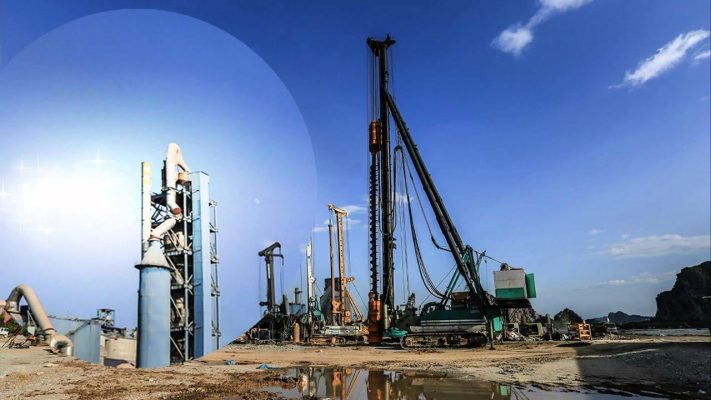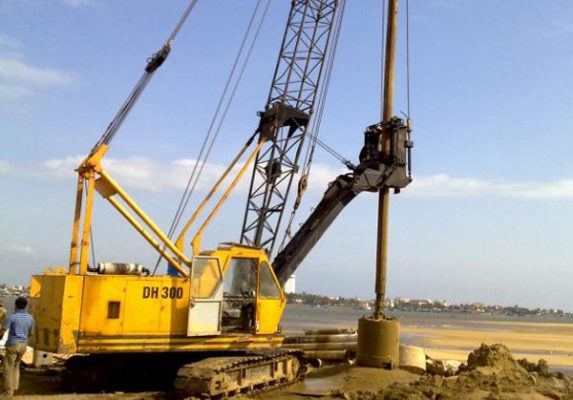In modern construction, bored pile and diaphragm wall construction are two common methods used in building foundations for various structures. Although they share the common goal of providing a solid foundation for the construction, there are fundamental differences between bored pile and diaphragm wall construction that need to be understood for appropriate application.

Bored Pile Construction:
Bored pile construction involves creating reinforced concrete piles in situ using drilling machines to bore holes in soil or rock according to design specifications, followed by lowering steel cages and pouring concrete.
The dimensions of bored piles vary widely: diameters range from 400mm to 2,500mm, with some exceptions reaching up to 3,000mm, and drilling depths can go up to 120m.
Bored piles are commonly used for structures with high loads (such as high-rise residential and office buildings), with pile load capacities ranging from 75 tons to over 4,000 tons.
Bored piles are a suitable foundation solution for high-rise buildings, especially in environments with stringent requirements. They can withstand horizontal thrust forces due to large lateral displacements of the ground, friction, or seismic conditions.
Diaphragm Wall Construction:
A diaphragm wall is a reinforced concrete wall with a width ranging from 0.6m to 1.5m and depths up to 50 meters. Diaphragm walls typically have rectangular cross-sections, but they can also have cross-sections such as cross (+), T-shape, I-shape, L-shape, or Y-shape.
Diaphragm walls serve both as waterproof barriers and structural support for the construction (often combined with bored piles). They have significant load-bearing capacity, ranging from 600 tons to 3,600 tons per pile.
Diaphragm walls are commonly used as foundations for high-rise buildings, high-rise residential complexes with one or more basement levels, towers, elevated roads, and bridges.

Differences in Construction Methods:
The construction methods of bored piles, barrettes, and diaphragm walls are similar. They involve using drilling equipment to bore into soil or rock to the designed depth, using Bentonite slurry to stabilize the borehole walls, lowering steel cages, and pouring concrete using the tremie method.
Conclusion:
Although both bored pile and diaphragm wall construction methods aim to enhance the strength and stability of structures, they have their own advantages and characteristics. The choice between the two methods depends on various factors such as geological conditions, technical requirements, and project budget.


 VN
VN CN
CN KR
KR JP
JP